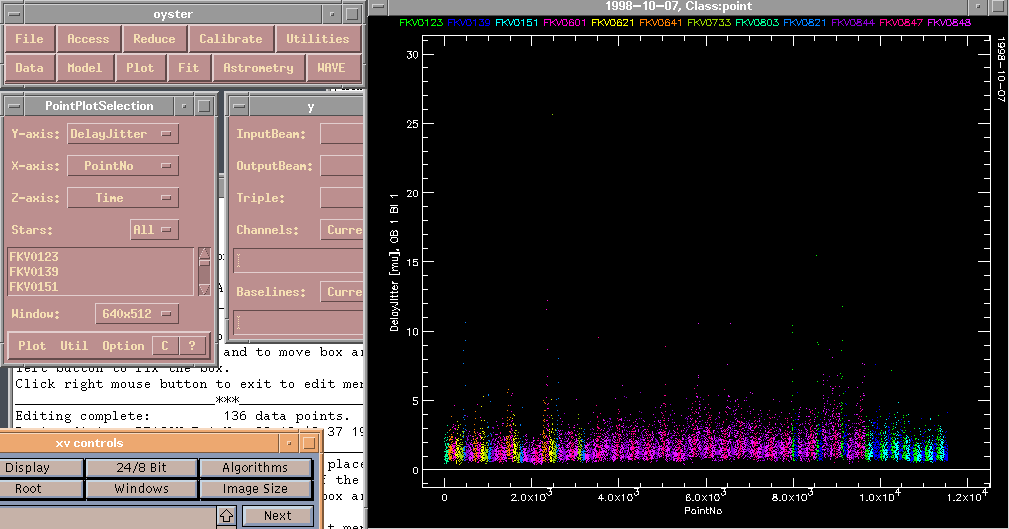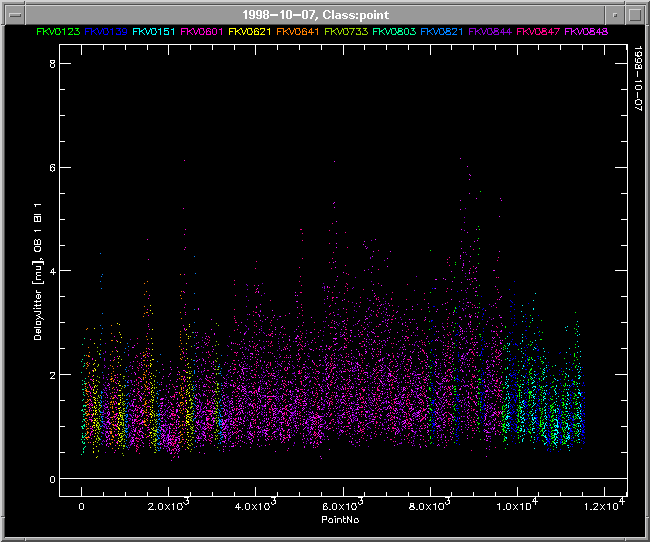Reducing point data

Point data are the 1s averages computed by CONSTRICTOR. This is a fairly big
amount of data usually, so don't try to plot all of them at once, or else you
could be forced to go for a cup of coffee while OYSTER is plotting, for example,
all channels because you forgot to set the channel directive to 'Selected'.
Start out by looking at the delay jitter data, which tells you if the
delay lines performed well or not. Since point data are so many, we choose
to automatically flag data based on a 3-sigma outlier criterion. This editor
can be found under Plot|Auto. (The reason it's here is that the plotting
routine is called, and told to go through the data as usual while editing,
but skip the plotting.) Delay jitter data has an output beam index, so don't
forget to look at all three of them. Re-plot after each edit, to check whether
the procedure worked as advertised. If you are not happy with the result,
click on Reduce|PointData|FlagTable|UNFLAG, and you will be presented with
a list of all recorded flagging commands, tagged with a time stamp and a
reason. Just click on the last item, and you would be removing the last
set of flags applied, both from the data and the flagtable.

This is how the delay jitter data look like after automatic editing. I have
chosen to plot them versus point number, which makes an even distribution of
data points along the x-axis. Look at the y-axis label for a second, to
note which indices are listed. Here it is OB for output beam, and Bl for
baseline. With the three-way beam combiner, these two are degenerate in the
sense that there is a 1-to-1 correspondence of spectrometers and baselines,
but with the 6-way beam combiner this will not be the case anymore!
Next stop
Back to tour page
Back to main help page

